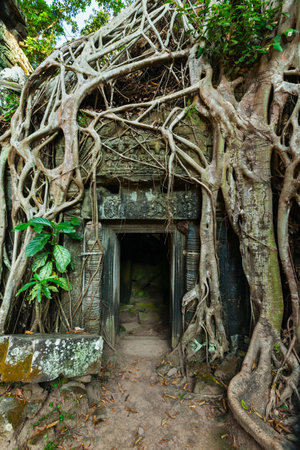Introduction to the Five Elements Theory
The Five Elements theory, known as Wu Xing in Chinese philosophy, stands as one of the foundational pillars of traditional East Asian thought. Emerging from the intellectual crucible of ancient China, this conceptual framework explores the dynamic relationships between Wood, Fire, Earth, Metal, and Water. Each element represents not just a physical substance but also a set of processes and qualities that interact in cycles of generation and control. The philosophical basis of Wu Xing extends far beyond material explanations; it is intimately linked with notions of balance, transformation, and harmony within nature and human society. For centuries, these ideas have shaped Chinese medicine, cosmology, art, and even governance. Their enduring relevance highlights an ongoing dialogue between tradition and adaptation, which continues to resonate as the Five Elements concept finds new interpretations and applications—most notably in modern Britain’s multicultural landscape.
2. Origins and Development in Ancient China
The Five Elements theory, known as Wu Xing (五行) in Mandarin, finds its roots deep within ancient Chinese philosophy. Its earliest recorded references date back to the late Zhou dynasty (c. 1046–256 BCE), emerging as a framework for understanding patterns and processes in nature, society, and the cosmos. Initially, the elements—Wood, Fire, Earth, Metal, and Water—were conceptualised not as physical substances but as dynamic phases or modes of change.
Evolution Through Dynastic Periods
Over successive dynasties, the Five Elements theory was refined and systematised. During the Han dynasty (206 BCE–220 CE), scholars like Dong Zhongshu integrated it with Yin-Yang cosmology, giving rise to a sophisticated worldview that linked natural phenomena with human affairs. The table below illustrates key developments across major periods:
| Dynasty/Period | Key Contributions to Wu Xing |
|---|---|
| Zhou (1046–256 BCE) | Initial articulation; used in political philosophy and divination |
| Qin (221–206 BCE) | Adoption into state ideology; alignment with imperial legitimacy |
| Han (206 BCE–220 CE) | Synthesis with Yin-Yang theory; integration into medicine and astronomy |
| Tang/Song (618–1279 CE) | Further elaboration in metaphysics and alchemy; everyday life applications expanded |
Integration into Traditional Medicine and Cosmology
The Five Elements theory became foundational in traditional Chinese medicine (TCM). Each element was associated with specific organs, emotions, seasons, and directions. For example:
| Element | Organ System | Emotion | Season |
|---|---|---|---|
| Wood | Liver/Gallbladder | Anger | Spring |
| Fire | Heart/Small Intestine | Joy | Summer |
| Earth | Spleen/Stomach | Pensiveness/Worry | Late Summer |
| Metal | Lungs/Large Intestine | Sadness/Grief | Autumn |
| Water | Kidneys/Bladder | Fear | Winter |
Cultural Impact on Daily Life
The influence of Wu Xing extended beyond scholarly circles into daily practices—guiding architecture, dietetics, music, and even governance. For instance, emperors would align rituals with elemental cycles to seek harmony between the state and the cosmos. This holistic approach exemplified how ancient Chinese society sought balance by integrating philosophical concepts into tangible aspects of life.

3. Transmission to the West: Historical Encounters
The journey of the Five Elements theory from ancient China to the Western world is a fascinating tale of intercultural exchange, adaptation, and intellectual curiosity. The Silk Road, which flourished from as early as the Han Dynasty (c. 2nd century BCE), served not only as a trade route for silk and spices but also as a conduit for ideas, philosophies, and medical knowledge. Along this network, Chinese scholars and traders came into contact with Persian, Indian, Arabic, and eventually European cultures. Through these exchanges, elements of Chinese cosmology—including the Five Elements—began to filter westward.
During the Middle Ages, Arab scholars translated many Chinese medical texts into Arabic and later Latin, introducing concepts such as Wu Xing to broader audiences. These translations often compared the Five Elements with Greek notions of the four humours, creating a hybrid framework that Western physicians found both familiar and novel. In Britain, early encounters with Eastern philosophy were sporadic until the age of exploration and colonial expansion in the seventeenth and eighteenth centuries. British merchants, missionaries, and scholars who travelled or corresponded with China brought back not just porcelain and tea, but also an intrigue for its holistic worldview.
By the nineteenth century, British intellectual circles began to engage more systematically with Eastern thought. The rise of Oriental studies at institutions like Oxford and Cambridge facilitated deeper inquiry into Chinese classics. Medical practitioners in Victorian Britain experimented with acupuncture and herbal remedies inspired by Chinese principles, though often interpreted through a Western scientific lens. Thus, the Five Elements theory was gradually woven into the fabric of British cultural and intellectual life—not as a wholesale adoption, but as a source of inspiration that challenged established paradigms and opened new avenues for understanding health, nature, and human existence.
4. Adaptation in British Cultural and Intellectual Contexts
The introduction of the Five Elements (Wu Xing) philosophy to Britain has not been a straightforward transmission, but rather a complex process of adaptation and reinterpretation. British thinkers, practitioners, and the wider public have received this ancient Chinese concept through various lenses, resulting in unique syntheses that reflect local values and intellectual traditions. This phenomenon can be observed across philosophical discourse, medical practice, and artistic expression within the UK.
Philosophical Reception and Integration
British philosophers and scholars have historically approached foreign concepts with an analytical curiosity, often seeking to compare them with established Western frameworks. The Five Elements were scrutinised alongside classical Greek theories such as the Four Humours and Aristotle’s four elements (earth, air, fire, water). Some British intellectuals identified parallels between the dynamic interrelationships in Wu Xing and systems thinking prevalent in modern philosophy and science.
| Chinese Five Elements | Greek Four Elements | British Philosophical Response |
|---|---|---|
| Wood, Fire, Earth, Metal, Water | Earth, Air, Fire, Water | Sought synthesis; explored functional roles rather than fixed substances |
Medical Practice: From Curiosity to Complementarity
The British medical community’s engagement with the Five Elements began as an orientalist curiosity but evolved into practical integration within alternative medicine. Acupuncture clinics and Traditional Chinese Medicine (TCM) practitioners increasingly referenced the Five Elements model for diagnosis and treatment. Meanwhile, British patients often perceived these approaches as holistic alternatives to NHS biomedical models. This has led to a hybridisation where some therapists blend TCM principles with Western psychosomatic medicine or naturopathy.
Domains of Medical Application in Britain
| Domain | Mode of Adaptation | Cultural Perception |
|---|---|---|
| Acupuncture & TCM Clinics | Direct use of Wu Xing theory for patient care | Alternative/holistic therapy; growing mainstream acceptance |
| Psycho-Emotional Therapy | Integration of elemental archetypes for mental health frameworks | Niche but innovative among progressive therapists |
| Public Health Education | Simplified metaphors to explain balance and wellbeing | User-friendly language; accessible via wellness workshops |
Artistic Reimagining: Symbolism and Creativity
British artists and designers have drawn inspiration from the Five Elements both as a symbolic vocabulary and as a structural principle. In visual arts, theatre productions, and even landscape design, elements such as wood or water are reinterpreted through local materials or cultural motifs. This cross-cultural appropriation is often underpinned by a desire to evoke harmony or cyclical change—resonating with broader British interests in environmentalism and seasonal cycles.
Key Points of Artistic Adaptation:
- Visual Arts: Use of elemental colour palettes adapted to British landscapes.
- Theatre: Thematic exploration of transformation using elemental metaphors.
- Music & Literature: Reference to elemental cycles to structure narrative or composition.
This dynamic adaptation highlights not only the enduring appeal of the Five Elements but also the creative capacity of British culture to absorb and reimagine global philosophical traditions within its own intellectual and artistic domains.
5. Modern Applications in Contemporary Britain
In present-day Britain, the Five Elements theory—originating from ancient Chinese philosophy—has found a distinctive place within the country’s alternative medicine and holistic wellness landscape. While not embedded in mainstream medical practice, its principles are increasingly woven into the fabric of complementary therapies and lifestyle trends. This phenomenon reflects both the British appetite for integrating global health perspectives and a broader societal shift towards holistic well-being.
The Five Elements in Alternative Medicine
Across various British cities, acupuncture clinics, Traditional Chinese Medicine (TCM) practitioners, and wellness centres reference the Five Elements as part of diagnostic and treatment frameworks. Here, practitioners interpret symptoms through the lens of Wood, Fire, Earth, Metal, and Water—seeking to restore balance within the body’s internal systems. Although regulated differently than conventional healthcare, these practices have garnered respectability among segments of the public who value personalised and preventative care.
Holistic Therapies and Lifestyle Integration
The influence of Five Elements thinking has also permeated holistic therapies beyond TCM. Some nutritionists, herbalists, and yoga instructors in Britain adapt elemental correspondences to diet planning, herbal formulations, or movement sequences. For example, seasonal eating guides may recommend foods associated with specific elements to harmonise with environmental changes—a concept that resonates with traditional British interests in gardening and natural living.
Wellness Trends and Cultural Adaptation
The British wellness industry has shown agility in adapting global concepts like the Five Elements into accessible formats. Retreats might offer workshops on “Balancing Your Elements,” while mindfulness apps include content inspired by elemental cycles. Although such interpretations can sometimes dilute original meanings, they foster cultural cross-pollination—allowing ancient Eastern ideas to inform modern British approaches to stress management, resilience, and self-care.
Ultimately, the presence of Five Elements thinking in contemporary Britain highlights a dynamic intersection between historical wisdom and modern innovation. As British society continues to embrace diversity in health philosophies, these ancient concepts are reinterpreted to address twenty-first-century challenges—demonstrating their enduring relevance across time and culture.
6. Critical Reflections: Integration and Challenges
The adaptation of the Five Elements theory—rooted in ancient Chinese philosophy—into modern British society presents a complex interplay of cultural, scientific, and ethical considerations. As this worldview is increasingly referenced in wellness, design, and alternative medicine across the UK, it is vital to critically evaluate both its integration and the challenges that arise.
Cultural Resonance and Misappropriation
Integrating an Eastern conceptual framework like the Five Elements into British culture offers opportunities for enriching perspectives on health, environment, and personal well-being. However, there is a fine line between genuine cultural appreciation and superficial appropriation. While some practitioners promote authentic understanding, others risk reducing these intricate ideas to mere trends or commercial products. This dynamic raises questions about respect for cultural origins and the responsibilities of those disseminating such knowledge in a Western context.
Scientific Scrutiny and Evidence-Based Practice
British society places high value on empirical evidence and scientific rigour. The Five Elements system, while coherent within its original philosophical context, often lacks the kind of clinical validation expected by Western medical standards. This tension can lead to scepticism among healthcare professionals and regulatory bodies. There is ongoing debate about the role of traditional frameworks in public health, especially when claims are made without sufficient scientific backing. For meaningful integration, advocates must balance respect for tradition with transparent communication about what has—and has not—been scientifically substantiated.
Ethical Considerations in Adaptation
Introducing ancient worldviews into new social contexts also presents ethical challenges. Practitioners must navigate issues such as informed consent, cultural sensitivity, and the avoidance of misleading claims. There is a moral imperative to ensure that adaptations do not distort or commodify the original philosophies for profit or prestige. Ethical engagement requires collaboration with experts from both cultures and honest dialogue about potential limitations.
Prospects for Future Integration
Looking ahead, successful integration of the Five Elements into British society will depend on open-minded yet critical approaches. Interdisciplinary research between historians, scientists, and practitioners can foster deeper understanding. Educational initiatives that contextualise ancient knowledge within contemporary frameworks may bridge gaps between tradition and modernity. Ultimately, embracing both the strengths and limitations of the Five Elements could enrich Britain’s multicultural landscape—provided integration proceeds with intellectual honesty, ethical integrity, and mutual respect.

